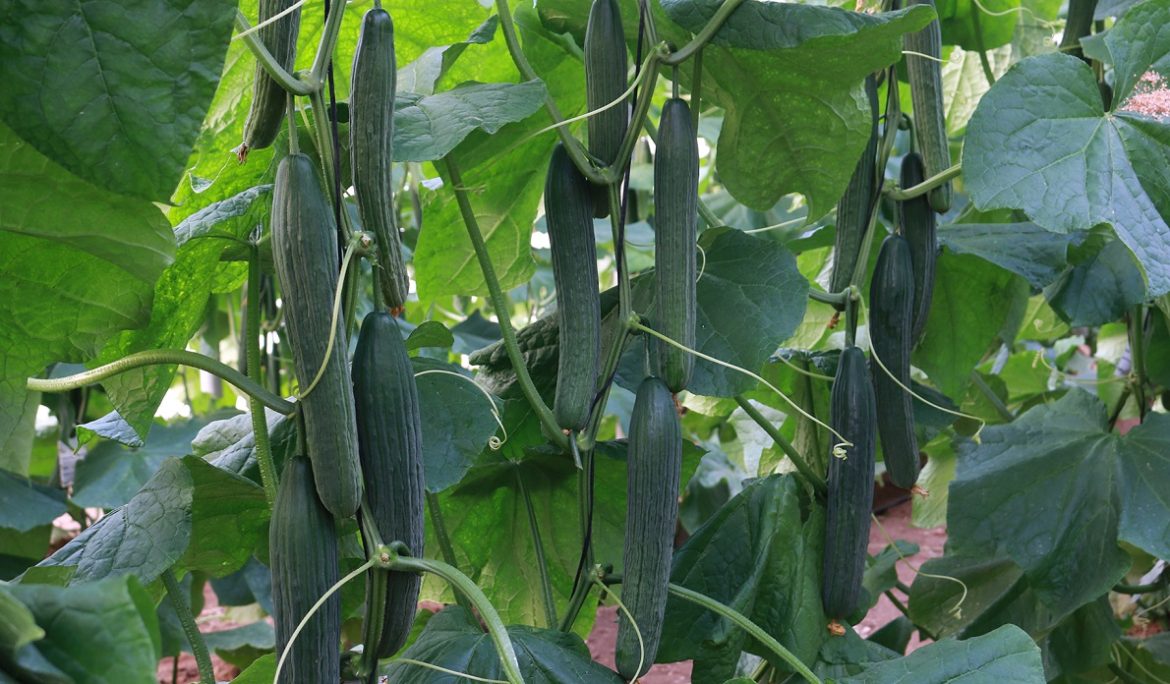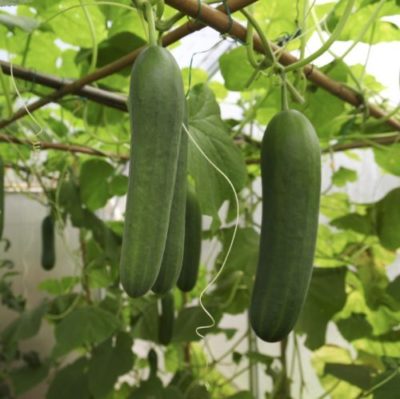
Cucumber originated from India and has an important place in vineyards. Its fruits are mainly used for salads. In the 100 gram edible part of its fruits, 96.3 percent water, 2.7 percent carbohydrate, 0.4 percent protein, 0.1 percent fat, and 0.4 percent mineral content are found. Apart from this, there are abundant amounts of Vitamin B in it.
Its fruits are cool in nature and helpful in relieving constipation. Many types of beauty cosmetics are being made using cucumber juice. It is cultivated on a priority basis in all regions of the country.
Suitable climate
The maximum temperature for its cultivation should be 40 degrees Celsius and a minimum of 20 degrees Celsius. 25 to 30 degrees Celsius temperature is good for good growth and flowering. Due to excess rainfall, humidity and change, there is an increase in the spread of pests and diseases. Male flowers grow more at higher temperatures and light conditions, while female flowers are more in contrast when the weather is there.
Land selection
For cultivation of cucumber (Known as Kheera in India), sandy loam or loam land with proper management of drainage has been found to be the best. The amount of carbon in the land and the pH value should be 6.5 to 7. Cucumber is mainly a hot climate crop, but the frost effect is more on it.
Advanced varieties
Foreign varieties
Japanese Clove Green, Selection, Straight – 8 and Poinsett, etc. are prominent.
Advanced varieties
Swarna Ageti, Swarna Purnima, Pusa Udai, Poona Kheera, Punjab Selection, Pusa Sanyog, Pusa Barkha, Kheera 90, Kalyanpur Hara Kheera, Kalyanpur Medium, and Kheera 75, PCUH-1, Swarna Poorna, and Swarna Sheetal are the major ones.
Hybrid varieties
Pant hybrid cucumber – 1, Priya, Hybrid – 1 and Hybrid – 2, etc. are prominent. For more information on varieties, read here- Advanced and hybrid varieties of cucumbers, know their characteristics and yields.

Field preparation
For the preparation of the cucumber crop, the first plowing should be done with a soil-turning plow. After that, with 2 to 3 plowing harrows or cultivators, the soil should be made brittle, after that, it should be potted. So that the field becomes flat. Before the last plowing, 15 to 20 tons of cow dung should be thoroughly mixed with rotten manure or compost soil.
Manures and Fertilizers
For the cultivation of cucumber, 15 to 20 tons of cow dung should be provided with 80 kg of nitrogen, 60 kg of phosphorus, and 60 kg of potash per hectare along with rotten manure or compost. Half of phosphorus and potash and half the amount of nitrogen should be given on the ridge at the time of sowing. The remaining nitrogen should be divided into two equal parts and planted with soil after 20 and 40 days of sowing.
Sowing time
Sowing is done in the plains as the main crop in the first week of February to June. In South India, it is sown from June to October, while in the hilly parts of North India, it is sown from April to May. To take the summer crop early, prepare the seedlings in polythene or pro-tray bags in January and plant them in February.
Seed quantity
Sowing of the one-hectare area requires 2 to 3.25 kg of pure seed. Before sowing the seed should be thoroughly treated with a fungicide such as captan or thiram.
Method of sowing
Prepare a ridge at a distance of 1.5 meters in a well-groomed field. To sow seeds at a distance of 60 to 90 centimeters on pits, pits should be made and at a depth of 1 centimeter, sow 2 seeds in each pit.
Irrigation management
At the time of sowing, moisture should remain in sufficient quantity in the field, otherwise, the growth and growth of seeds do not occur properly. Rainy crops do not require irrigation. On average the summer crop should be watered for 5 days and the winter crop for 10 to 15 days. There should be no shortage of water at the time of stem growth, flowering, and fruit growth.
Weeding hoeing
The problem of weeds is more in the rainy crop. From germination to the first 20 to 25 days, weeds cause more damage to the crop. This adversely affects the growth of the crop and stops the growth of the plant. Therefore weeds should be removed from time to time in the field. After weeding, weeding should be done after planting the soil near the roots, which leads to faster growth of plants.
Pest Control
Aphid
These are very small and green insects. Those who suck the juice of soft parts of plants. The number of these insects increases rapidly, leaves become yellow, and adversely affects the growth of the crop. These pests are helpful in spreading viral diseases.
- Control
To prevent them, Flonikamide should be sprayed at the rate of 150 ml per hectare of 50% wg.
Fruit fly
Undercooked or ripe fruits rot due to this insect. Due to which the cucumber crop gets a heavy loss.
- Control
To control this, spraying of Cartaf SP2 gram per liter of water should be done.
Leaf-eating Sundi
These insects damage the leaves by eating them. Due to this, the cucumber causes great damage to the crop.
- Control
Chlorpyrifos should be sprayed for its control.
Reddish
Leaves are damaged by yellowish-brown colored moong. The leaves become a sieve. Its larvae are cut from near the ground of the plants.
- Control
Spray Thiocloprid @ 1.5 ml per water for prevention.
Disease And Control
Humid thawing
This disease is caused by mildew. The seeds do not germinate due to this disease. Some big plants lie on the ground when they are diseased.
- Control
For prevention, the seeds should be treated with a fungicide called mancozeb.
Mriduramil Asita
This disease is also a disease caused by mildew. The symptoms of the disease first appear as a light yellow angular stain on the upper surface of the leaves. Under these spots, mildew appears like cotton wool on the lower surface of the leaf. The diseased plants remain dwarf. The size of the fruit remains small.
- Control
Do not grow cucumber class vegetables in the same field every year.
When the harvest ends, burn the residue.
Spraying Mancozeb medicine at the rate of 625 grams per hectare.
Fruit thawing
Due to this disease, first the flowers rot. After some time, a cotton wool-like net appears on the flowers, later the disease spreads on the flowers and makes them rotten. Fungi-like cotton wool appears purple on the patient’s part. The outbreak of disease is more due to high humidity and high temperature.
- Control
Properly manage drainage.
Support bamboo or cement poles and rope through the rope to make the vines.
Churni mildew
The attack of this disease is more on the leaves of 15 to 23 days old. The spread of this disease is from one place to another by air. White patches emerge on the lower surface of old leaves. Normal growth of these leaves stops and the leaves turn yellow. The leaves turn green and the plant dies.
- Control
For prevention, as soon as the symptoms of the disease are seen, apply sulfax 2 kg, carathane 600 ml solution in 1000 liters of water, and spray it at the rate of one hectare. For detailed information on pest and disease control in cucumber crop, read here – Major pests and diseases of cucumber crop and how to prevent them
Fruit harvesting
The fruits of cucumber should be broken in a soft and soft state. Fruit harvesting should be done at intervals of 2 to 3 days. Timely fruit harvesting has been found to increase yields.
Yield
Cucumber yield depends on variety selection, crop management, and compatibility. Nevertheless, the above scientific technique gives an average yield of 200 to 350 quintal per hectare on the cultivation of cucumber. Hybrid varieties yield more than this.
